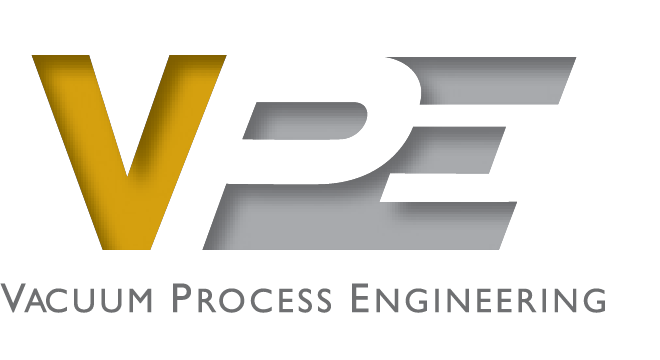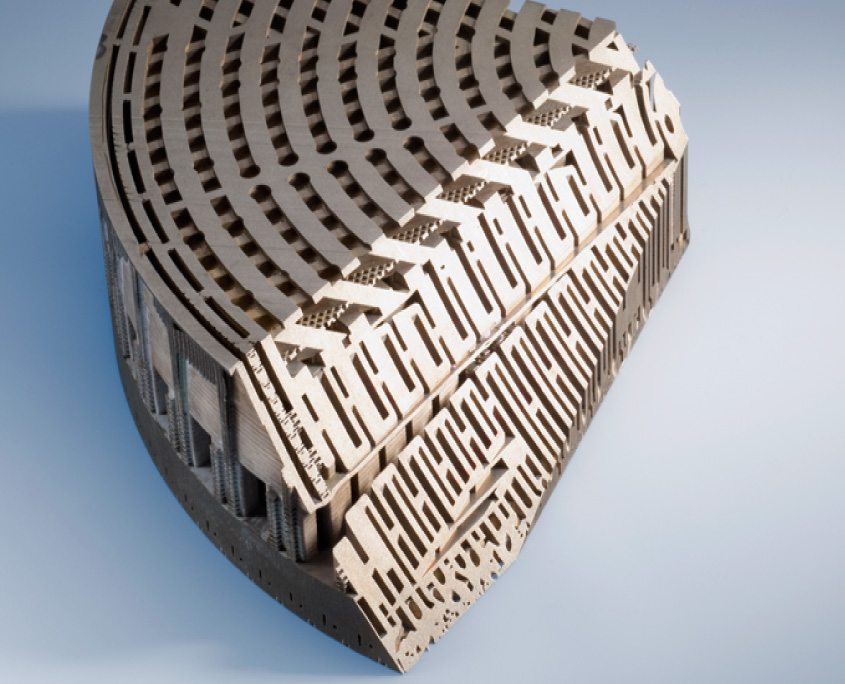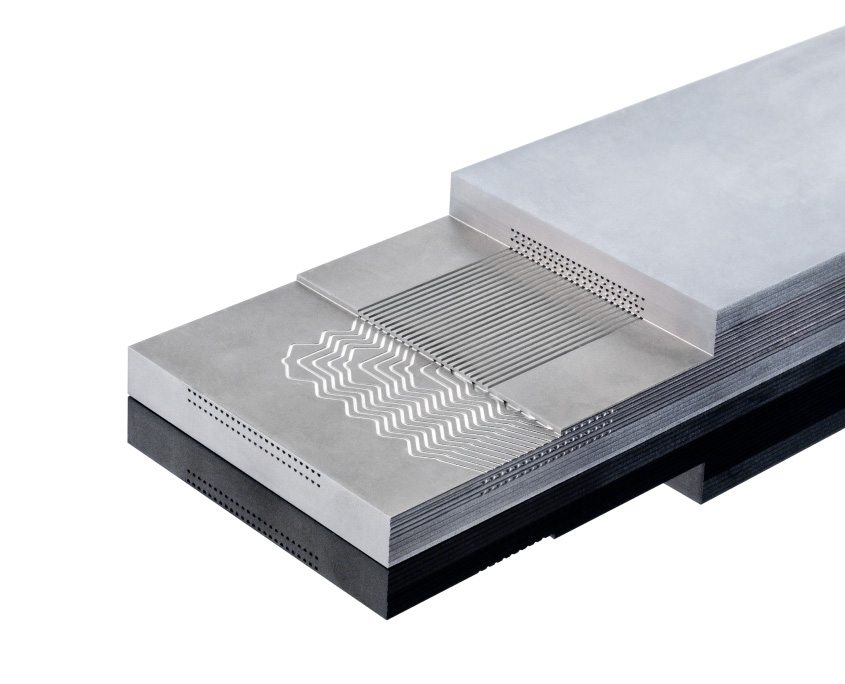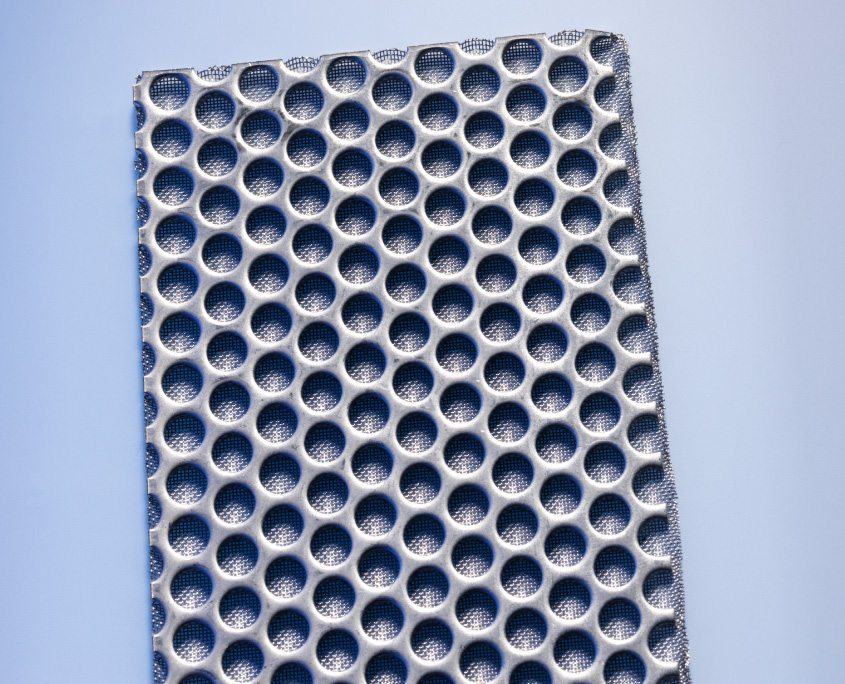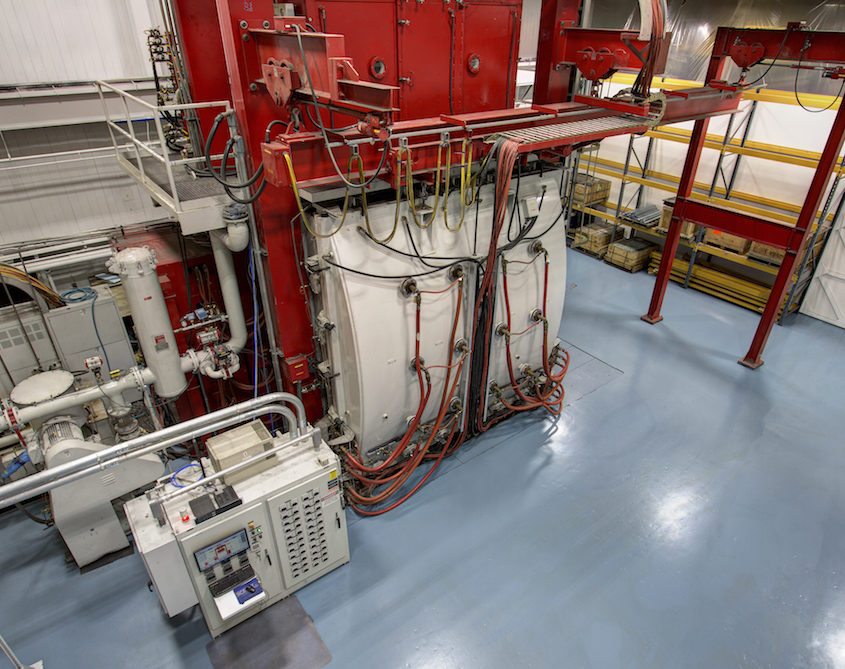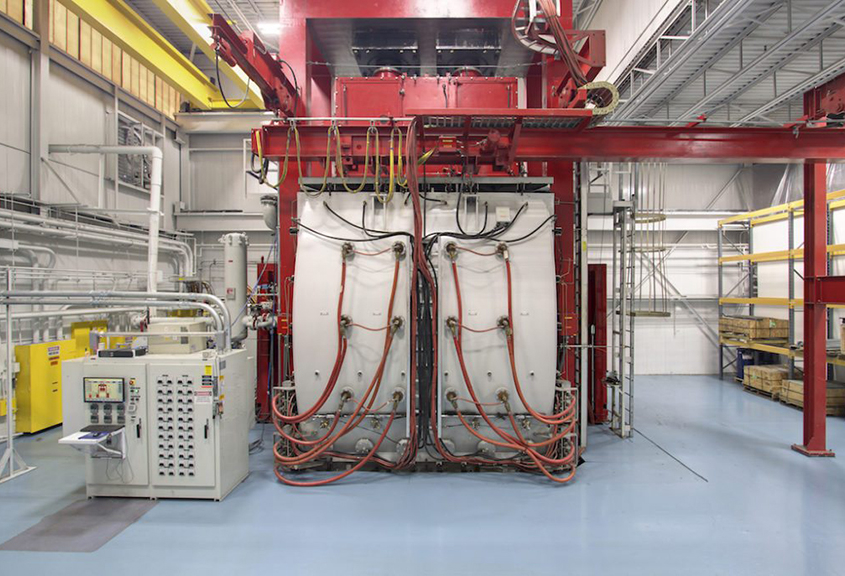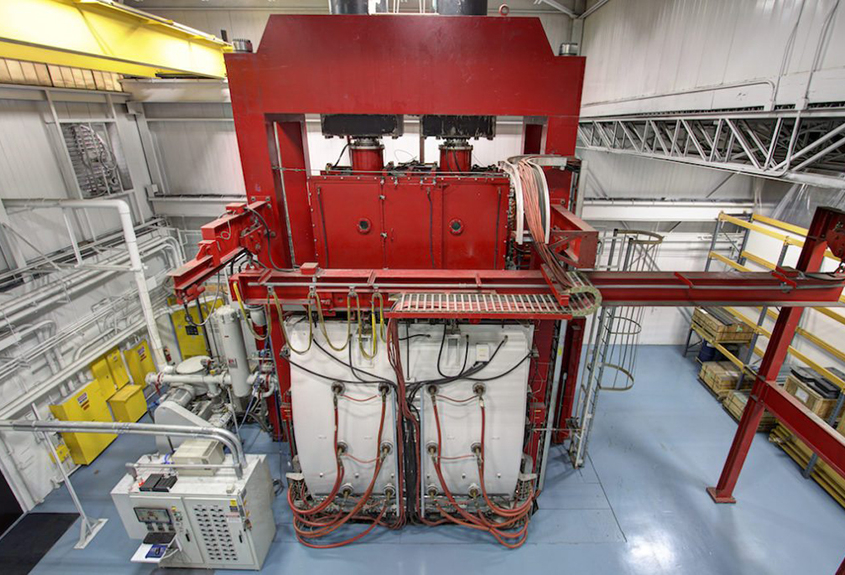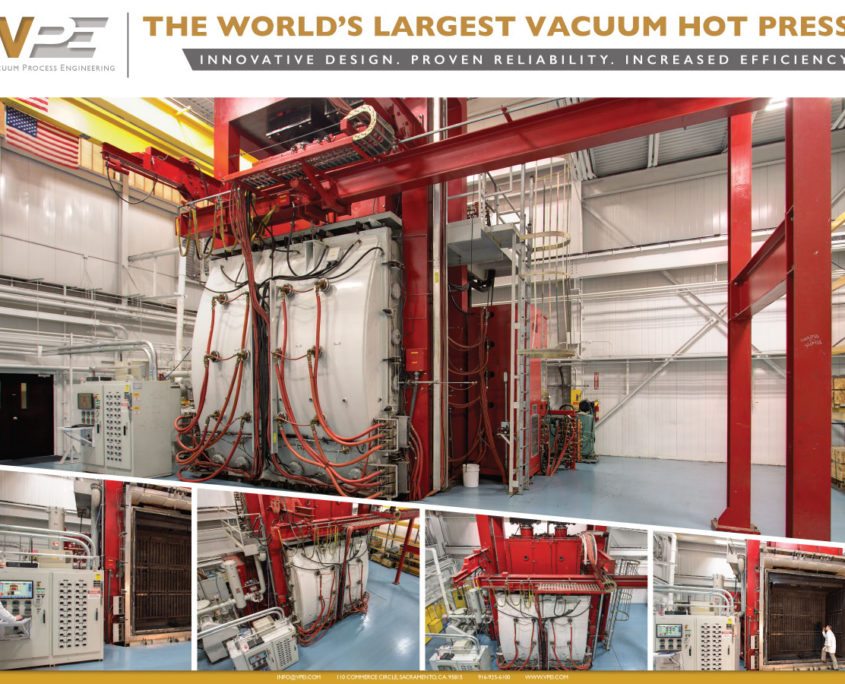With over 45 years of experience, VPE is among the most qualified and well-equipped diffusion bonding specialists in North America. Furthermore, our depth of knowledge and design expertise enables the successful bonding of the most intricate and challenging devices.
Diffusion Bonding Capabilities
VPE’s history of developing new diffusion bonding process variations and improving current techniques ensures that we employ the best method for each application, e.g.:
- Applied dynamic loads to 4,800,000 lbs.
- Assembly sizes up to 60 inches in diameter
- Assembly weights to 60,000 pounds
- Controlled vacuum atmosphere
- High-volume production
- Induction-based
- Interface-assisted
- Long cycle, minimal strain
- Low temperature
- Routinely bond parent materials as thin as 0.0002 inches thick
- Partial pressure control for up to three gases
- Product design to optimize end-use product performance as well as production costs
- Quick cooling argon-to-water heat exchangers for high-production-rate processing
- Reactive interface
- Temperatures range to 1900°C
- Transient Liquid Phase (TLP)
Materials
Reliable for joining a wide range of materials e.g.:
- Aluminum
- Aluminum oxide
- Copper
- Gold and other exotics
- Ceramics
- Glidcop™
- Haynes™ alloys
- Inconel™ alloys
- Magnesium
- Molybdenum
- Nickel
- Platinum
- Silver
- Stainless steel
- Steel
- Titanium
Suitable for Precision Assemblies
VPE uses diffusion bonding instead of precision brazing for end-use applications in which the use of a filler alloy might compromise intricate features and hermeticity.
Furthermore, it is often the joining method of choice in the production of shim assemblies for mini or microchannel devices, which are for manifolds, biomedical implants, nozzles, mixers, and other precision assemblies.
In addition, it is also appropriate in situations where the temperatures of the end-use application are very high and there is a risk of the alloy material’s softening and the joint’s weakening in service.
Applicable to an Array of Markets
We perform diffusion bonding for customers in a variety of industries, e.g.:
- Aerospace
- Medical
- Energy
- Chemical plant fabrication
- Electronics
- Instrumentation
Diffusion bonding is the preferred joining method e.g.:
- Microchannel devices as well as photo-etched laminates
- Gigahertz waveguides as well as antennas
- Corrosion-resistant manifolds
- Microchannel heat exchangers
Solutions for Discerning Customers
Examples of diffusion bonding projects e.g.:
- 0005’’ thick titanium foil implantable foil sensors
- Aerojet Rocketdyne: space shuttle valve assemblies
- Aluminum cold plates for electronics cooling
- Copper cold plates as well as flexible thermal straps for cooling
- Heat exchangers
- Major medical device corporation: artificial heart implant components
- Microchannel devices for fuel cells, reactors, reformers, as well as heat exchangers
- NASA: bonding parameter development for Mars Lander
- Schilling: robotic assemblies for submarines used in the offshore oil industry
- Superalloy structures measuring 24” x 24” x 27” encapsulating miles of microchannels as well as other microfluidics features
- UHV electron beam windows
The Diffusion Bonding Process
Applied Force is Carefully Selected for Each Application
Diffusion bonding positions parent materials together and applies force and heat in a vacuum furnace, causing atoms from each part to diffuse to the other. As a result, the end product is a solid piece at parent material strength.
Filler-Free Process Ensures Parent Material Strength
A key feature of diffusion bonding is that it does not require the use of filler material. Given that, this means the resulting joint has properties similar or equal to the parent materials.
Transient Liquid Phase (TLP) Bonding Specialized Applications
TLP (Transient Liquid Phase) bonding uses an extremely thin “activation layer” to create a short-lived liquid interface at the joining parent materials. In addition, the liquid phase material fully diffuses into the solid parent materials during the diffusion bonding process.
Critical Diffusion Bonding Process Parameters are Considered
Our team can ensure the strongest bonds by considering the following factors e.g.:
- Component flatness
- Interfacial features
- Load application profile
- Production tooling design
- The service environment
- Strain-based processing
- The suitability of the product design and end-use application for diffusion bonding
- Surface chemistry and metallurgy
- Surface roughness
- Temperature profile design
The World’s Largest Vacuum Hot Press
VPE currently owns the world’s largest vacuum hot press furnace. As a result, VPE is perfectly suited for brazing, bonding, and hot pressing large-size assemblies.
- The usable chamber area is 60 in. x 120 in. x 120 in.
- Temperatures in excess of 1900° Celsius in a vacuum and partial pressure atmosphere.
- Two independent 1200 ton rams allow for loads to 4.8 million pounds.
- Ten high accuracy load cells allow precision force as well as precision control on the production elements.
- Assembly weights in excess of 60,000 lbs.

